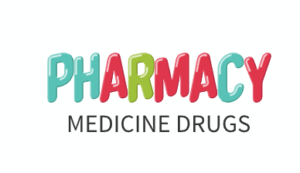Acquired Hemolytic Anemia Symptoms
The symptoms acquired in hemolytic anemia are mild. If the problem develops slowly, symptoms that may occur first include:
- Feeling weak or tired more often than usual, or with exercise.
- Headaches.
- Problems concentrating or thinking.
If the anemia gets worse, symptoms may include:
- Lightheadedness when you stand up.
- Pale skin colour (pallor).
- Shortness of breath.
- Sore tongue.
Causes of Acquired Hemolytic Anemia
- Certain chemicals, drugs and toxins.
- Infections.
- Transfusion of blood from a donor with a blood type that does not match.
- Certain cancers.
- When antibodies form against red blood cells for no reason, the condition is called idiopathic autoimmune hemolytic anemia.
- Complication of another disease.
- Past blood transfusions.
- Pregnancy (if the baby’s blood type is different from the mother’s).
Diagnosis Of Acquired Hemolytic Anemia
- Absolute reticulocyte count.
- Direct or indirect Coombs test.
- Hemoglobin in the urine.
- LDH (level of this enzyme rises as an result of tissue damage).
- Red blood cell count (RBC), hemoglobin, and hematocrit.
- Serum bilirubin level.
- Serum free hemoglobin.
- Serum haptoglobin.
- Donath-Landsteiner test.
- Cold agglutinins.
- Free hemoglobin in the serum or urine.
- Hemosiderin in the urine.
- Platelet count.
- Protein electrophoresis – serum.
- Pyruvate kinase.
- Serum haptoglobin level.
- Urine and fecal urobilinogen.
Treatment for Acquired Hemolytic Anemia
The first treatment tried is most often a steroid medicine, such as prednisone. If steroid medicines do not improve the condition, treatment with intravenous immunoglobulin (IVIG) or removal of the spleen (splenectomy) may be considered. If the immune system do not respond to steroids. Drugs such as azathioprine (Imuran), cyclophosphamide (Cytoxan), and rituximab (Rituxan) have been used. Blood transfusions are given with caution, because the blood may not be compatible and it may cause more red blood cell destruction.
Prevention Acquired Hemolytic Anemia
Screening for antibodies in donated blood and in the recipient may prevent hemolytic anemia related to blood transfusions
| Warm autoimmune hemolytic anemia (WAHA) | Corticosteroid therapy, initiated with the blood transfusion. | Suppress the immune destruction of the transfused red cells. |
| High-dose intravenous γ-globulin (IVIgG) | This therapy causes blockage of the reticuloendothelial system and reduces the clearance of the IgG-sensitized red blood cells. |
|
| Splenectomy. | Splenectomy removes the major site of antigen presentation and, in turn, reduces antibody production. |
|
| Vincaalkaloids, azathioprine and cyclophosphamide. | Suppress immune system | |
| Danazol. | The possible mechanisms include: reduction in red cell bound C3d; immunomodulation by alteration of T-cell subsets; and reduction of FcR in the reticuloendothelial (RE) system. |
|
| Cold autoimmune hemolytic anemia (CAHA) | Plasmapheresis that is transfusion blood in warm temperature. | To reduce the level of IgM cold autoantibody. |
| Alkylating agents. | May reduce the production of cold autoantibody. |
|
| Alloimmune hemolytic anemia (AHA) | Rh-negative pregnant woman should receive passive immunization with Rh immune globulin at 28-weeks’ gestation. | Neutralize antibodies in womb. |
| Drug-induced hemolytic anemia (DIHA) | Stop drug therapy | |
| Non-immune hemolytic anemia (NIHA) | Immunosuppressive therapy using corticosteroids, antilymphocyte globulin or cyclosporin A has been used. |
More Feed Reads
Anemia Symptoms Complications Prevention & Treatment Drugs Prescribed
Acquired Hemolytic Anemia What Is It? & Its Types
Anemia Risk Factors & Pathophysiology Of Its Types | Haematological Disease
Anemia Symptoms Complications Prevention & Treatment Drugs Prescribed
